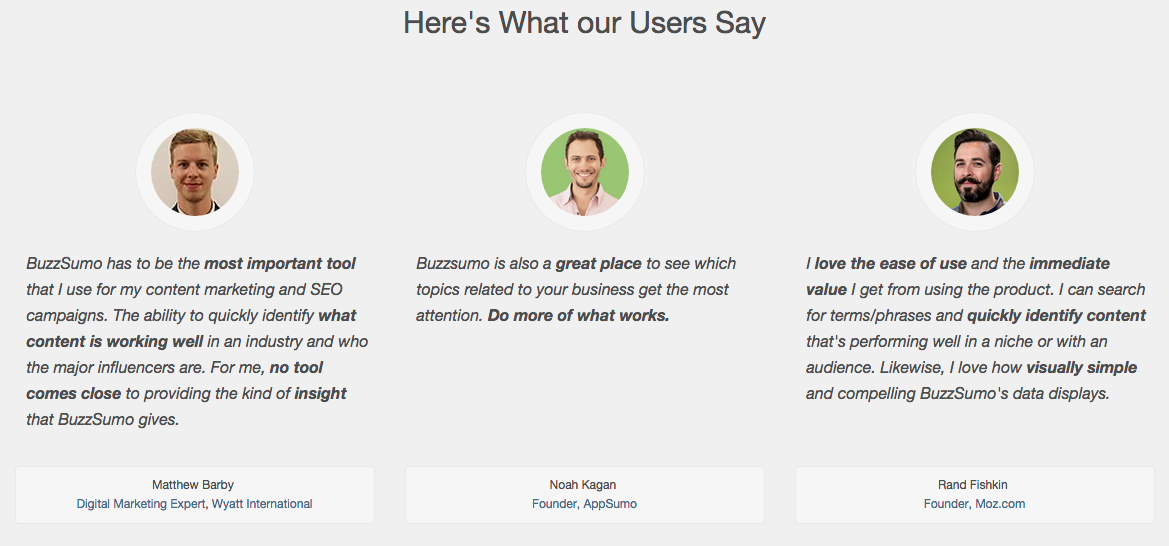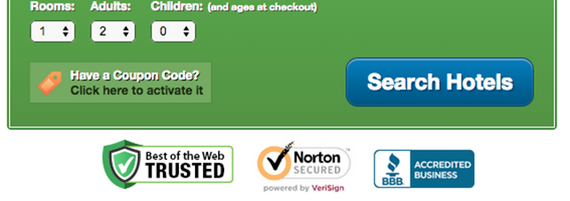Today’s eCommerce shoppers are more informed than ever and can judge a site in an astoundingly short 50 milliseconds. In that fraction of a second, they form an opinion about the design, the images, and the overall “feel” of your site. Obviously, most users spend more time than that on a site, but the lesson is the same – you need to convey the right “feel” in order to keep and convert users.
Imagine that you are looking to buy a new vacuum and you find two sites that carry the model you want at almost identical prices. One of the sites is very modern and well designed, has plenty of customers as evidenced by their reviews, and an active presence on social media. The other site is quite the opposite, looks a bit dated, and has no security or checkout badges. Which are you more likely to purchase from?
What this hypothetical shows is the impact that authority, whether perceived or real, has on users. Despite how common shopping online has become, shoppers still need reassurance that the site they are using is legitimate, and that reassurance comes from a variety of factors.
To borrow from Merriam Webster, authority is defined as “power to influence or command thought, opinion, or behavior.” So, in the context of the internet, we can assume an authoritative website is one that is well respected and highly thought of by users.
Note: We are not talking about page authority (PA) or domain authority (DA), two metrics related to the SEO of a site. For more information on those, check out Moz.
It should come as no surprise that sites appearing highly authoritative enjoy more success than their counterparts. So the question is simple, how does one increase or create authority on a site? The answer, however, is a bit more complicated.
The authority of a site is a highly subjective value and there are no established rules or steps guaranteed to unlock that coveted trust factor among users. However, there are things you can do to improve the look, reputation, and security of your brand and site.
An Awesome and Functional Design
We put this at number one because the rest of the list is pointless if you don’t have a site that meets the most basic of criteria. Think back to the example above, one of the reasons site 2 lost out was due to its dated design.
It’s 2015 and visitors expect a lot from websites, it needs to be functional, responsive, intuitive, informative, and aesthetically pleasing. Shoppers should be able to find what they want, checkout with ease, and be satisfied with the entire process.
To accomplish that, start with these:
A thorough ‘About’ page – this page is a huge opportunity to relate to your users and show off your company. Transparency is key here, this is your chance to highlight your mission, your staff, and your values while telling the story of how your company came to be.
Clear and simple navigation – users shouldn’t have to guess what page they are on, your menus should be intuitive and clearly written.
Quality content – content is still king and has the ability to bring users to your site and show them that you are an expert in your industry. Content is a great opportunity to go more in depth than a product description and show that you are both knowledgeable and passionate about an item or service. And, if you’re not crazy about writing, content can come in many other forms like videos and infographics.
Optimized everything – every step of your funnel should be tested and optimized to yield the highest satisfaction for your customers and the greatest results for you. If you don’t have an optimization plan in place, stop now and develop one before you even think about focusing on increasing your authority.
A Strong Social Presence
You know that person you always see out at parties that knows everyone’s name and will talk to anyone? You want to be that person, but in an online capacity, we’re talking the epitome of a social butterfly. I’m sure you already have a Twitter and Facebook page but are you using them as effectively as you could be?
A strong social presence reassures customers in two different ways: it lets them know that you are real and that you are accessible.
They want to see that other people are interested in your site/brand and know that a real person will respond to any questions or concerns they have. And not only that but multiple stats show that consistent use of social media marketing can increase sales and exposure.
Tips:
Provide value – this means not just responding to questions, but engaging your fans and followers. Be proactive and run contests and offer discounts so that they have a reason to check out your profile often.
Grow your base – the more followers the better, assuming they were gained legitimately (read: not paid for). Robbie Richards is a great resource here and we have used some of his tips at Uplift to increase our Twitter followers. More followers means more shares and increased recognition and trust.
Go to where your customers are – there are a lot of social media sites out there and different ones work better for different industries. For example, if you sell video or photography gear, you should consider using Instagram and Youtube to show off your products’ quality. Find out where your customers socialize and focus your efforts there.
Testimonials and Reviews
It doesn’t matter if you’re selling a product or a service, testimonials and reviews are gold for almost every site. They provide enormous social proof and create a “safety in numbers” mentality that lets people know other people have purchased and (hopefully) enjoyed your product. One site saw their conversion rate increase 35% as a result of adding product reviews.
How to get testimonials/reviews:
Ask – seems simple, right? Send a follow-up email once a customer has had ample time to try out the product or service and ask them what they think, you’ll be surprised at how willing most people are to write a few words.
Incentivize – if you aren’t having much luck with just asking for feedback, consider offering discounts on future orders to sweeten the deal.
Put it in your contract – this will likely only apply to B2B services but it’s worth considering a clause requesting feedback assuming all other requirements are met.
Trust and Security Badges
Yes, this can be a divisive topic with some people swearing by the use of trust seals and others claiming they are a gimmick. Still, when multiple case studies tout the gains achieved by their usage, we think they should be considered.
Seals and badges can be used to convey trust for multiple aspects of your site, including anti virus, identity protection, and a secure checkout just to name a few. They are a way for you to let your users know that you take certain things very seriously and they can trust you with their business.
However, when there are so many seals to choose from, it’s important to keep a few things in mind when choosing which to display:
They aren’t free – displaying a well-known seal like McAfee can be expensive, so make sure you treat it like an investment and do your due diligence on expected ROI.
Don’t overdo it – do not crowd your site with badges just because you can, it will come off as tacky and will hurt you in the end.
Test everything – the great thing about seals is they serve a purely aesthetic purpose and are easily added to or removed from a page. This allows you to test their benefits quite easily, which we recommend you do. Test everything from size and placement to the pages on which they are displayed, and then reap the benefits.
High Search Engine Position (SERP)
We almost didn’t include this since improving SEO is worthy of multiple posts on its own, but when you consider that the top 3 sites in a Google search receive over 50% of the clicks, it’s clear that high search position results in high perceived authority.
To break it down even further, one site found that ranking #1 results in 8.5 times more traffic than #5. This is a huge incentive to step up your SEO game as increased traffic should yield more leads and sales, assuming you’re doing other things right.
Just to narrow it down a bit, let’s take a look at a few ways to improve SEO that is highly relevant to eCommerce:
Product options – utilizing drop down menus to offer different colors and sizes will help mitigate the risk of duplicate content, a big no-no in the eyes of Google. Plus, it looks and functions significantly better than having a page for each option.
Optimized images – use plain English to title and label EVERY image on your site. Make sure to include Alt Tags and use clear and basic descriptions so that your image will show up in searches.
Descriptive meta and title tags – neither of these actually carries any SEO weight, but both will improve your clickthrough rate when used correctly. Try and name your pages so that there is no doubt as to what they contain, and use the meta description to entice users to visit your site.
That’s a wrap!
So there you have it, 5 simple ideas to utilize as you attempt to increase your site’s authority and ultimately its conversions. Should you stop there? Absolutely not, these are very much the tip of the iceberg and each of them can be broken down much, much further. Think of this as a starting point, the point at which you realize how much user trust and brand recognition can improve your bottom line. Once you see what even one of these can do for your site, we’re sure you’ll be anxious to try the rest.
Good luck!
About The Author
Quincy handles most of the marketing at Uplift ROI, a company focused on crowdsourced conversion rate optimization. His work has been featured on sites like VWO and LemonStand and you can keep up with him over at @UpliftROI. Currently residing in China, he is passionate about entrepreneurship, travel, and IPAs.


